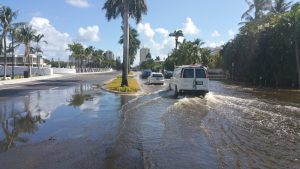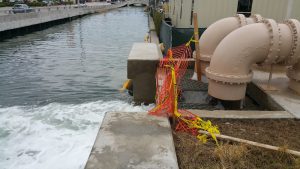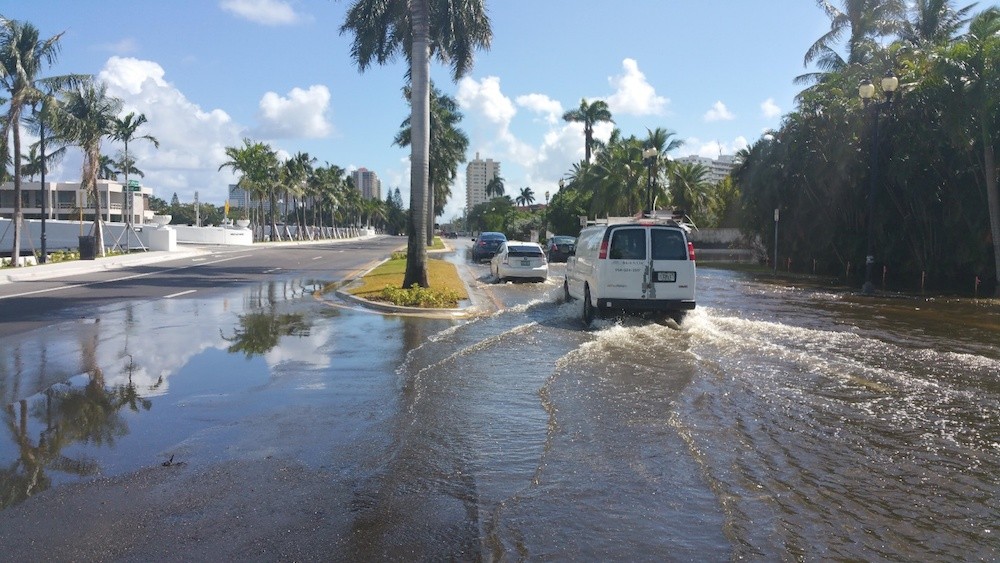Tidal flooding from events such as the so-called “King Tides” and “Super Tides” are flooding urban coastal communities with increasing frequency as sea levels rise. These tidal flood waters can acquire a wide range of contaminants and toxins as a result of soaking in the built environment of urbanized coastlines. A multi- institutional, interdisciplinary research team, including scientists from AOML, is examining the types of contamination picked up from the urbanized coastal landscape and transported into coastal waters through tidal flooding.
For the past 3 years, a team of microbiologists at AOML has been investigating the types of bacterial contaminants, including fecal-indicating bacteria and disease-causing pathogens, carried back to the marine environment from tidal flood waters, causing potential exposure to both human populations and marine habitats such as coral reefs, beaches, and estuaries.
The AOML team once again investigated contamination from tidal flooding in southeast Florida communities during the recent King Tides of October 17-18, 2016. They were joined by the investigators from Florida International University, the University of Miami, and Nova Southeastern University in measuring bacterial levels, nutrient levels, and selected chemical contaminants in the tidal flood waters and receiving environmental waters from urbanized South Florida communities such as Miami, Miami Beach, Fort Lauderdale, and selected cities in the Florida Keys.

during the King Tides of October 17-18, 2016. Image Credit: NOAA
These coastal communities face increasing challenges in how to cope with the impacts of ever-more frequent tidal flooding due to sea level rise. For example, the City of Miami Beach recently implemented state-of-the-art pumping systems to collect flood waters and pump them out of the city. However, as these communities learn to adapt to the “new normal” of sea-level rise, they must find ways to not only deal with the problem of physical flooding but also the impacts upon regional water quality that such flooding can cause as it acquires contaminants from the built environment.

into the Dade Canal that empties into Biscayne Bay. Image credit: NOAA
This research project by NOAA and its academic partners seeks to understand the patterns and mechanisms of flood water contamination to help vulnerable communities find solutions to become more resilient. The research will also enable scientists to better understand and predict the future impacts of such coastal tidal flooding events on human and environmental health in an era of increasing sea level and climate change.
